In film studies, the Auteurship theory is that a film reflects the director’s personal creative vision. For this, I’m going to be using Christopher Nolan to reflect this theory. As Nolan’s films usually have very similar elements to them, such as his frequent use of Non-Linear narratives, blue and orange colour filters and lighting, troubled protagonists and similar casts and crew. I will be using two of Nolan’s films as examples for each point to show how he is a good example of an auteur film-maker.
Non-Linear Storylines
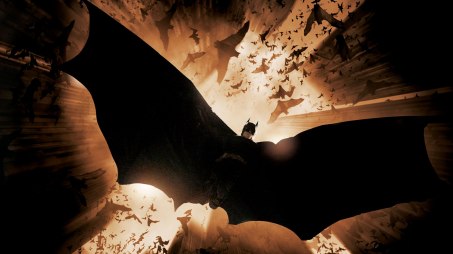 Non-linear narratives can be seen in many of Nolan’s films. Although, he doesn’t always use the technique the same way for his films. Some will feature flashbacks. For example, In Batman Begins (2005), Nolan uses flashbacks to show the events that got Bruce Wayne (Christian Bale) to become Batman. The film frequently cuts to Wayne as an 8-year old child (Gus Lewis) and then back to him as an adult. What this does is get the audience to see the decisions that Bruce makes and then show the motivation for making said choices. This allows the audience to connect with the character more as they now understand why he became the way he is in his adult years.
Non-linear narratives can be seen in many of Nolan’s films. Although, he doesn’t always use the technique the same way for his films. Some will feature flashbacks. For example, In Batman Begins (2005), Nolan uses flashbacks to show the events that got Bruce Wayne (Christian Bale) to become Batman. The film frequently cuts to Wayne as an 8-year old child (Gus Lewis) and then back to him as an adult. What this does is get the audience to see the decisions that Bruce makes and then show the motivation for making said choices. This allows the audience to connect with the character more as they now understand why he became the way he is in his adult years.
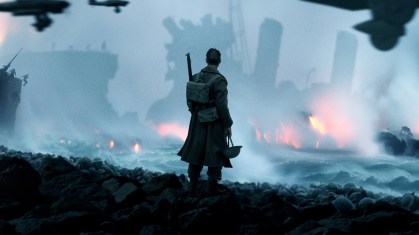 Recently Nolan has been using Non-linear story-telling in a different way, the best example being Dunkirk (2017). The film depicts several different stories told around the same event. However, each story is told from a different point in time, all concluding with the evacuation of Dunkirk. For example, the story around the soldiers spans over a week whilst the story around the civilian boat is only a day, and the story around the RAF Pilots is 45 minutes. This is mainly to show how the event itself is experienced differently from different perspectives. For the soldiers, it’s a psychological horror as they don’t know if they’ll ever leave. Whilst for the Air Force it’s a race against time to save the troops. These two films are a very good example of Nolan’s use of Non-Linear Narratives and how Nolan can be seen as an Auteur Director.
Recently Nolan has been using Non-linear story-telling in a different way, the best example being Dunkirk (2017). The film depicts several different stories told around the same event. However, each story is told from a different point in time, all concluding with the evacuation of Dunkirk. For example, the story around the soldiers spans over a week whilst the story around the civilian boat is only a day, and the story around the RAF Pilots is 45 minutes. This is mainly to show how the event itself is experienced differently from different perspectives. For the soldiers, it’s a psychological horror as they don’t know if they’ll ever leave. Whilst for the Air Force it’s a race against time to save the troops. These two films are a very good example of Nolan’s use of Non-Linear Narratives and how Nolan can be seen as an Auteur Director.
Blue and Orange
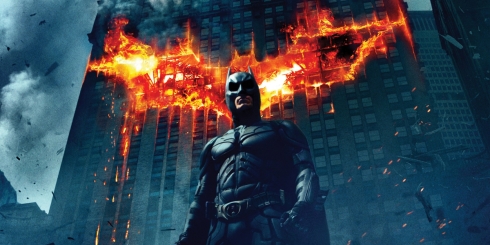 The Colours blue and orange appear a lot in Nolan films. With The Batman Trilogy and Inception, it’s clear as day. These colours are used to evoke certain emotions from the audience. Psychologically, blue evokes a calm, cold and peaceful feeling for people. Whilst orange has almost the exact opposite effect. it’s more lively and evokes more aggressive emotions. And so the two contrast with one another. A really good example of this is The Dark Knight, in the scene where the GCPD are transporting Harvey Dent (Aaron Eckhart) to the County Jail. When they are on the main road the colour scheme is blue. Showing that the police are in control of the situation. But when then they come across the burning fire-truck, introducing orange, that forces them to go into the lower fifth, where the colour changes to orange. At this point, The Joker (Heath Ledger) and his gang control of the situation. And this is where the action of the sequence begins. A really good example of how Nolan uses Blue and Orange in his films.
The Colours blue and orange appear a lot in Nolan films. With The Batman Trilogy and Inception, it’s clear as day. These colours are used to evoke certain emotions from the audience. Psychologically, blue evokes a calm, cold and peaceful feeling for people. Whilst orange has almost the exact opposite effect. it’s more lively and evokes more aggressive emotions. And so the two contrast with one another. A really good example of this is The Dark Knight, in the scene where the GCPD are transporting Harvey Dent (Aaron Eckhart) to the County Jail. When they are on the main road the colour scheme is blue. Showing that the police are in control of the situation. But when then they come across the burning fire-truck, introducing orange, that forces them to go into the lower fifth, where the colour changes to orange. At this point, The Joker (Heath Ledger) and his gang control of the situation. And this is where the action of the sequence begins. A really good example of how Nolan uses Blue and Orange in his films.
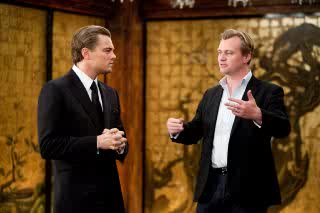 Another good example is in Inception. In this film, Nolan uses blue and orange in a different way. In Inception, the characters need to implant an idea into someone’s head by going deep into his subconscious. This is represented by using ‘Dream Levels’. So, in order to differentiate between the different levels. For example. The first dream level when the team are on their mission is coloured blue. This is mainly because the majority of the scene is shot outside and the setting is a rainy day, associating the colour of blue with water. Whilst the second dream level is coloured orange. This level is set indoors in a hotel, and so an orange tinge would be more fitting. And it clearly separates the two levels apart.
Another good example is in Inception. In this film, Nolan uses blue and orange in a different way. In Inception, the characters need to implant an idea into someone’s head by going deep into his subconscious. This is represented by using ‘Dream Levels’. So, in order to differentiate between the different levels. For example. The first dream level when the team are on their mission is coloured blue. This is mainly because the majority of the scene is shot outside and the setting is a rainy day, associating the colour of blue with water. Whilst the second dream level is coloured orange. This level is set indoors in a hotel, and so an orange tinge would be more fitting. And it clearly separates the two levels apart.
However, it could be argued that Nolan doesn’t fit the auteur theory since he appears to have dropped the use of blue and orange coloured filters as of late, switching to a more muted colour palette, particularly with Interstellar and Dunkirk. Whilst both do feature the colours blue and orange for certain scenes they have a much softer look compared to the bold nature they had in The Dark Knight and Inception
Questionable Protagonists
 Nolan’s films tend to centre around protagonists that perform questionable actions to achieve their goals. Whilst Batman is a very good example about this, a vigilante who works outside the law to fight crime, I’d prefer to discuss Cobb (Leonardo DiCaprio) from Inception and then Tommy (Fionn Whitehead) from Dunkirk, as both are original characters created by Nolan himself. In Inception, Cobb must perform the impossible task of planting an idea in the mind of Robert Fischer (Cillian Murphy). If he completes this task then he will be able to return home to see his family. Whilst his motives seem relatable and emotional, which allows the audience to root for him, the actions he takes to achieve his goals can be put into question. He is taking part in corporate espionage, he is manipulating an individual who, as far as the audience is concerned, isn’t a terrible person and he is putting the lives of his team-mates at risk as he doesn’t inform them that they can’t escape the dream by killing themselves and will instead be sent to a much worse fate.
Nolan’s films tend to centre around protagonists that perform questionable actions to achieve their goals. Whilst Batman is a very good example about this, a vigilante who works outside the law to fight crime, I’d prefer to discuss Cobb (Leonardo DiCaprio) from Inception and then Tommy (Fionn Whitehead) from Dunkirk, as both are original characters created by Nolan himself. In Inception, Cobb must perform the impossible task of planting an idea in the mind of Robert Fischer (Cillian Murphy). If he completes this task then he will be able to return home to see his family. Whilst his motives seem relatable and emotional, which allows the audience to root for him, the actions he takes to achieve his goals can be put into question. He is taking part in corporate espionage, he is manipulating an individual who, as far as the audience is concerned, isn’t a terrible person and he is putting the lives of his team-mates at risk as he doesn’t inform them that they can’t escape the dream by killing themselves and will instead be sent to a much worse fate.
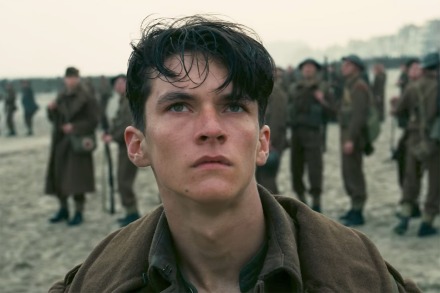 The other questionable protagonist I wish to discuss is Tommy. Whilst Dunkirk doesn’t seem to have a specific protagonist I believe Tommy comes close to taking that title. In the film, Tommy is a British soldier who is desperate to get home. And in order to get home, he breaks quite a few rules so that he can get on an earlier boat and not be left behind. He cuts the line by posing as a medic carrying a wounded soldier, he even crawls underneath a bridge in order to not be spotted sneaking onto a boat. Yes, Tommy does some very questionable things in order to leave Dunkirk. However, the audience can relate to him as they understand what will happen if he’s left on the beach, as the German army is slowly closing in.
The other questionable protagonist I wish to discuss is Tommy. Whilst Dunkirk doesn’t seem to have a specific protagonist I believe Tommy comes close to taking that title. In the film, Tommy is a British soldier who is desperate to get home. And in order to get home, he breaks quite a few rules so that he can get on an earlier boat and not be left behind. He cuts the line by posing as a medic carrying a wounded soldier, he even crawls underneath a bridge in order to not be spotted sneaking onto a boat. Yes, Tommy does some very questionable things in order to leave Dunkirk. However, the audience can relate to him as they understand what will happen if he’s left on the beach, as the German army is slowly closing in.
Practical Effects
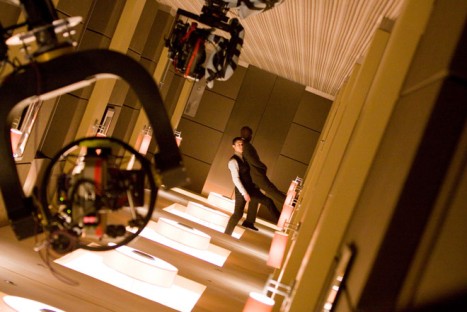 Christopher Nolan has been viewed as a pioneer of practical effects. If something doesn’t entirely require the use of a computer then he’ll do it practically. Practical effects can be seen in all six films highlighted in this essay. However, his most famous uses of the technique are in Inception and The Dark Knight Rises. For example, in Inception, there is a fight scene between Arthur (Joseph Gordon Levitt) and a projection in the middle of a hotel hallway. But the room is starting to roll and so Arthur and the projection fight on the walls and ceiling of the hallway. This was achieved practically through the use of a rig which the set was built into, causing it to roll and making it look like the actors were defying gravity. This is a very good example as to how Christopher Nolan heavily relies on practical effects as many directors would instead use CGI to create such an effect.
Christopher Nolan has been viewed as a pioneer of practical effects. If something doesn’t entirely require the use of a computer then he’ll do it practically. Practical effects can be seen in all six films highlighted in this essay. However, his most famous uses of the technique are in Inception and The Dark Knight Rises. For example, in Inception, there is a fight scene between Arthur (Joseph Gordon Levitt) and a projection in the middle of a hotel hallway. But the room is starting to roll and so Arthur and the projection fight on the walls and ceiling of the hallway. This was achieved practically through the use of a rig which the set was built into, causing it to roll and making it look like the actors were defying gravity. This is a very good example as to how Christopher Nolan heavily relies on practical effects as many directors would instead use CGI to create such an effect.
 In The Dark Knight Rises Nolan again creates an entire action scene using practical effects. At the start of the film, the CIA are escorting Bane and two of his henchmen when the plane is hijacked and then destroyed. The entire sequence is shot practically. Filmed in two separate locations: The Cairngorm Mountains in Scotland for the exterior shots and a simulator in the Cardington Hangars in England for the interior shots. Both of these examples demonstrate how Nolan uses practical effects a lot and why he can be considered an Auteur filmmaker.
In The Dark Knight Rises Nolan again creates an entire action scene using practical effects. At the start of the film, the CIA are escorting Bane and two of his henchmen when the plane is hijacked and then destroyed. The entire sequence is shot practically. Filmed in two separate locations: The Cairngorm Mountains in Scotland for the exterior shots and a simulator in the Cardington Hangars in England for the interior shots. Both of these examples demonstrate how Nolan uses practical effects a lot and why he can be considered an Auteur filmmaker.
Realism
 Linking to practical effects, Nolan films tend to be grounded in some form of realism. Even films like Inception, whilst having a very unrealistic premise does ground itself in realistic psychology when it comes to dreams. Or Interstellar which does base itself and realistic science. To illustrate this point, let’s consider The Dark Knight Trilogy and Interstellar, as both have plots that revolve around their realistic settings. In The Dark Knight Trilogy, Nolan re-envisions the classic comic book character, Batman, by putting him in a much more realistic setting. He doesn’t use any of the more super-powered characters, such as Poison Ivy or Man-Bat, and any that he does use he re-imagines them, such as Bane (Tom Hardy) Or Ras Al Ghul (Liam Neeson). Nolan primarily does this in order to make his Batman more relatable as he lived in a world not too dissimilar to our own.
Linking to practical effects, Nolan films tend to be grounded in some form of realism. Even films like Inception, whilst having a very unrealistic premise does ground itself in realistic psychology when it comes to dreams. Or Interstellar which does base itself and realistic science. To illustrate this point, let’s consider The Dark Knight Trilogy and Interstellar, as both have plots that revolve around their realistic settings. In The Dark Knight Trilogy, Nolan re-envisions the classic comic book character, Batman, by putting him in a much more realistic setting. He doesn’t use any of the more super-powered characters, such as Poison Ivy or Man-Bat, and any that he does use he re-imagines them, such as Bane (Tom Hardy) Or Ras Al Ghul (Liam Neeson). Nolan primarily does this in order to make his Batman more relatable as he lived in a world not too dissimilar to our own.
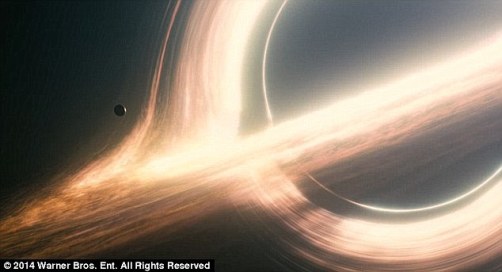 The other example, Interstellar, tries to stick to real science as much as it can. Nolan even hired renowned theoretical physicist Kip Thorne as a scientific advisor on the film. Whilst Interstellar does take certain liberties, such as the high gravity level of one of the planets not crushing the protagonists, but they did highlight how gravity can affect Time-Space and they were able to create what a black-hole would really look like.
The other example, Interstellar, tries to stick to real science as much as it can. Nolan even hired renowned theoretical physicist Kip Thorne as a scientific advisor on the film. Whilst Interstellar does take certain liberties, such as the high gravity level of one of the planets not crushing the protagonists, but they did highlight how gravity can affect Time-Space and they were able to create what a black-hole would really look like.
Celluloid over Digital
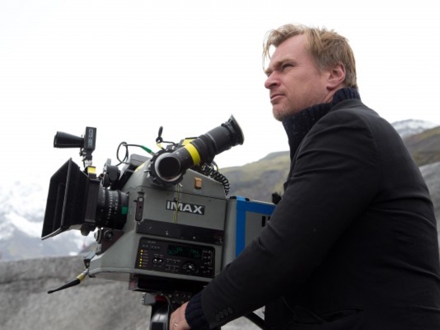 Nolan is one of the few directors in Hollywood who refuses to make the switch from celluloid to digital. For those who aren’t familiar with the difference, basically the former is the method of shooting on film celluloid and the other is shooting using digital cameras. Nolan insists on using film as he doesn’t see how the digital format can improve the quality of his shots. This can be used as an example of why Nolan is an auteur director as he insists on using a specific format to shoot his film that gives it a certain look.
Nolan is one of the few directors in Hollywood who refuses to make the switch from celluloid to digital. For those who aren’t familiar with the difference, basically the former is the method of shooting on film celluloid and the other is shooting using digital cameras. Nolan insists on using film as he doesn’t see how the digital format can improve the quality of his shots. This can be used as an example of why Nolan is an auteur director as he insists on using a specific format to shoot his film that gives it a certain look.
Cast & Crew
Nolan tends to use the same people for his films. Both In front and behind the camera. In terms of actors, Nolan has several he likes to use frequently, such as Tom Hardy (Inception, The Dark Knight Rises, Dunkirk) and Michael Caine (The Dark Knight Trilogy, Inception, Interstellar) and Cillian Murphy (Inception, The Dark Knight Trilogy, Dunkirk) but he has also used other actors for more than one project, such as Christian Bale (The Dark Knight Trilogy, The Prestige) and Anne Hathaway (The Dark Knight Rises, Interstellar). What makes this a good example of why Nolan is an auteur filmmaker is that these actors bring a similar look and feel to each film that they’re a part of.
As for the crew, Nolan has collaborated with cinematographer Wally Pfister on seven films (Momento, Insomnia, The Dark Knight Trilogy, The Prestige, Inception) and editor Lee Smith has worked on every Nolan film since Batman Begins. Along with famous music composer, Hans Zimmer. Much like the cast, these crew members bring their own methods and work ethics that gives Nolan’s film the unique look. Which makes this a good example of how Nolan fits the description of an auteur film-maker.
However, Nolan has used cinematographer Hoyte Van Hoytema on both Interstellar and Dunkirk so the argument of him using the same crew could be seen as invalid, albeit this is just one crew member and so it’s not as strong a counter-argument.
So these are all of the reasons why I believe Christopher Nolan to fit the Auteur Theory. What do you think? Was there anything I missed out? Do you disagree with anything? If so then please leave a reply down below. And, if you liked what you read then please follow this blog for more content. Thank you for reading.
